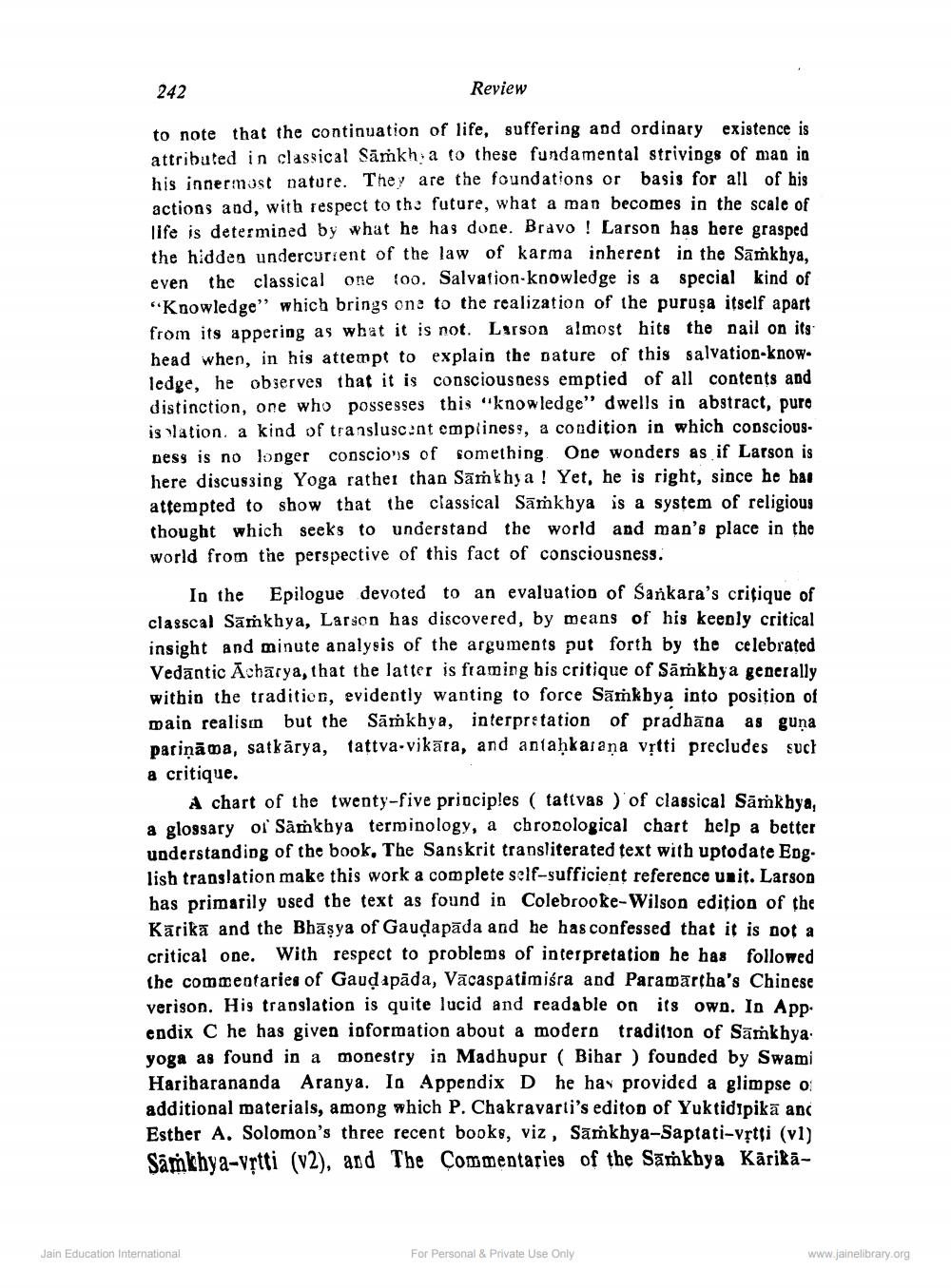________________
242
Review
to note that the continuation of life, suffering and ordinary existence is attributed in classical Samkh a to these fundamental strivings of man in his innermost nature. They are the foundations or basis for all of his actions and, with respect to the future, what a man becomes in the scale of Life is determined by what he has done. Bravo ! Larson has here grasped the hidden undercurrent of the law of karma inherent in the Samkhya, even the classical one (00. Salvation-knowledge is a special kind of "Knowledge” which brings one to the realization of the puruşa itself apart from its appering as what it is not. Larson almost hits the nail on its head when, in his attempt to explain the nature of this salvation-knowledge, he observes that it is consciousness emptied of all contents and distinction, one who possesses this knowledge" dwells in abstract, puro islation, a kind of transluscont empiiness, a condition in which consciousness is no longer conscious of something One wonders as if Larson is here discussing Yoga rather than Sāṁkhya ! Yet, he is right, since he has attempted to show that the classical Sāṁkhya is a system of religious thought which seeks to understand the world and man's place in the world from the perspective of this fact of consciousness.
Io the Epilogue devoted to an evaluation of Sarkara's critique of classcal Sāṁkhya, Larson has discovered, by means of his keenly critical insight and minute analysis of the arguments put forth by the celebrated Vedāntic Acharya, that the latter is framing his critique of Sāmkhya generally within the tradition, evidently wanting to force Samkbya into position of main realisin but the Sāṁkhya, interpretation of pradhāna as guna pariņāma, satkārya, tattva-vikāra, and antaḥkarana vịtti precludes such a critique.
A chart of the twenty-five principles ( tattvas ) of classical Sāṁkhya, a glossary of Samkhya terminology, a chronological chart help a better understanding of the book, The Sanskrit transliterated text with uptodate Eng. lish translation make this work a complete self-sufficient reference unit. Larson has primarily used the text as found in Colebrooke-Wilson edition of the Karika and the Bhaşya of Gaudapāda and he has confessed that it is not a critical one. With respect to problems of interpretation he has followed the commentaries of Gauļ apāda, Vācaspatimiśra and Paramartha's Chinese verison. His translation is quite lucid and readable on its own. In App. endix C he has given information about a modern tradition of Sāṁkhya yoga as found in a monestry in Madhupur ( Bihar ) founded by Swami Hariharananda Aranya. In Appendix D he has provided a glimpse of additional materials, among which P. Chakravarti's editop of Yuktidipikā ans Esther A. Solomon's three recent books, viz, Sāṁkhya-Saptati-vştsi (vl) Samkhya-vrtti (v2), and The Commentaries of the Samkbya Kärika
Jain Education International
For Personal & Private Use Only
www.jainelibrary.org




